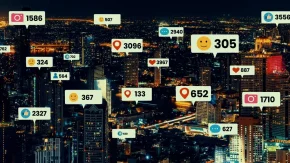Introduction
As online competition grows fiercer, delivering exceptional customer experiences has become non-negotiable. That’s why how we use chatbots for e-commerce success in 2025 isn’t just about automation—it’s about strategy, personalization, and efficiency. Here’s exactly how our business is leveraging chatbots to stay ahead.
1. Instant Support That Builds Trust
Today’s shoppers expect fast answers. Our chatbot provides real-time, 24/7 support for FAQs, shipping updates, return policies, and product queries. This level of responsiveness builds trust and increases the likelihood of conversion.
We integrated LiveChat with AI to handle more than 70% of initial inquiries, reducing support wait times and freeing our human agents for complex issues.
2. Personalized Product Recommendations
One of the most powerful ways we use chatbots for e-commerce success is through AI-driven personalization. Using purchase history, browsing behavior, and even customer location, our chatbot suggests products that fit individual tastes and needs—similar to how Amazon uses its recommendation engine.
This personalization has increased our average order value (AOV) by 15% and improved repeat customer rates.
3. Cart Recovery and Abandonment Reduction
Before using chatbots, we struggled with cart abandonment. Now, our chatbot automatically triggers friendly reminders or offers a discount code when a customer leaves the cart page. Platforms like ManyChat allow seamless integration with Facebook Messenger and SMS, giving us multiple channels to re-engage customers.
We’ve seen a 22% decrease in abandonment rates thanks to this proactive strategy.
4. Streamlined Order Tracking and Returns
Instead of manually responding to “Where is my order?” messages, our chatbot connects to our logistics software and gives customers real-time tracking updates. It also initiates return processes automatically, reducing friction and improving satisfaction.
Our integration with Re:amaze made this process effortless while maintaining brand voice.
5. Data Collection for Smarter Marketing
Every interaction with our chatbot helps us understand our customers better. We collect data on frequently asked questions, top product interests, and customer sentiment, which feeds into our marketing and SEO strategies.
This data-backed insight allows us to create more effective email campaigns and refine product listings using real customer language.
6. Multilingual Support for Global Reach
As we expanded internationally, multilingual chatbots became essential. Now our chatbot handles customer interactions in English, Spanish, and French—powered by Google Dialogflow NLP capabilities—ensuring we don’t lose sales due to language barriers.
Conclusion
In 2025, success in online retail demands more than just having an online store—it requires intelligent, personalized, and responsive systems. That’s how we use chatbots for e-commerce success: by making them central to our customer engagement, sales strategy, and automation processes.
If you’re not using chatbots this way yet, you’re not just behind—you’re losing sales.


















